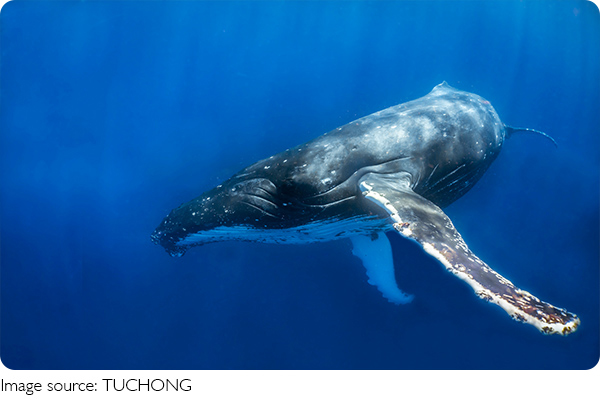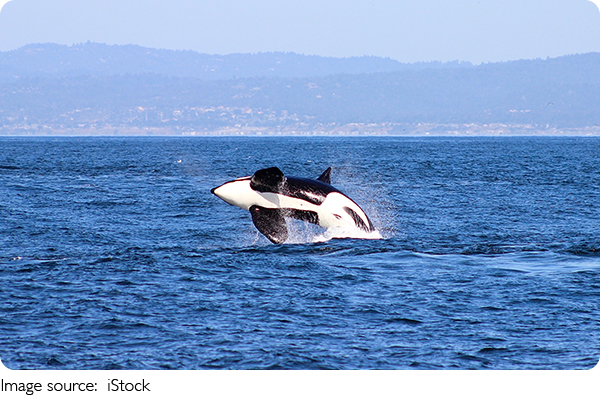Whale Song Secrets

Whale songs have fascinated humans for decades. From documentaries to research labs, we've been amazed by one simple question: How can a whale's voice travel so far—sometimes across entire oceans?
The answer lies in a mix of biology, physics, and the magical properties of the sea. Let's dive in and explore how whale songs become long-distance messengers in the deep blue world.
What Is a Whale Song?
Not all whales sing, but many do—especially humpback whales and blue whales. Their songs aren't random noise. They're made up of patterns, rhythms, and changes in tone, almost like a musical composition.
Whales use these songs to:
• Communicate with others
• Attract mates
• Signal their location
• Possibly navigate or mark territory
The incredible part? These sounds can travel thousands of kilometers underwater—something no human-made sound system can easily match.
Sound Travels Differently in Water
On land, sound travels through air. But underwater, things change. Water is denser than air, which allows sound to move much faster and farther. In fact, sound travels more than four times faster in water than in air.
Because of this, whale songs can carry across vast distances—sometimes from one side of an ocean to the other, depending on water temperature, depth, and current.
Low Frequencies Go Far
Whales use low-frequency sounds (deep tones) when singing. These sounds travel farther than high-pitched ones because they lose less energy along the way.
For example:
• Blue whales produce sounds as low as 10–20 Hz (well below human hearing), and these deep sounds can be heard hundreds or even thousands of kilometers away by other whales.
This is why whale songs often sound like long, deep hums or moans—they're built to last and travel.
The Secret Layer: The SOFAR Channel
There's a special layer in the ocean called the SOFAR channel (short for "Sound Fixing and Ranging"). It's located about 800 to 1000 meters below the surface, depending on where you are.
Here, sound travels particularly efficiently because of the combination of water temperature and pressure. It acts like an underwater highway, bouncing sound waves gently and keeping them from escaping upward or downward.
Whales may intentionally send their songs into this layer, allowing them to travel incredible distances—like nature's version of surround sound!

Big Bodies, Big Voices
Another reason whales can produce such powerful songs is their huge body size. Their vocal organs are built to push out large, strong sound waves.
Unlike humans, whales don't use vocal cords. Instead, they move air around chambers in their nasal passages to create sound. Their massive size helps generate low-frequency sounds that travel better underwater.
It's a fascinating combination of biology and environment working together.
Why This Matters—for Whales and Us
Whale songs aren't just beautiful—they're essential for survival. Whales live in a vast, mostly silent world. Clear long-distance communication helps them find each other, avoid danger, and even stay emotionally connected over great distances.
However, human activity—like ships, oil exploration, and underwater construction—has introduced a lot of noise pollution into the ocean. This can block or distort whale songs, making it harder for them to communicate.
Understanding how and why their songs work reminds us why protecting their natural soundscape is so important.
Let's Listen and Learn, Lykkers!
Have you ever heard a whale song recording? It's like hearing a voice from another world—calm, powerful, and mysterious. If you've experienced one or have a favorite fact about whales, share it with us in the comments!
Nature has a way of creating brilliance through simplicity. A whale's song is not just a sound—it's a lifeline that stretches through the ocean's heart. And now that we know the science behind it, we can appreciate these deep-sea singers even more. 🐋🌊
-
 Unmasking Manila’s MagicManila’s more than malls and mayhem—explore hidden lanes, old-world gems, and food that sings to your soul.
Unmasking Manila’s MagicManila’s more than malls and mayhem—explore hidden lanes, old-world gems, and food that sings to your soul. -
 Bilbao Travel GuideDiscover Bilbao: Your Ultimate Travel Guide with Insider Tips, Best Attractions & Easy Transport!
Bilbao Travel GuideDiscover Bilbao: Your Ultimate Travel Guide with Insider Tips, Best Attractions & Easy Transport! -
 Europe's Solo Escape PlanUnlock Europe's Secret Solo Paradises Before Everyone Else!
Europe's Solo Escape PlanUnlock Europe's Secret Solo Paradises Before Everyone Else!